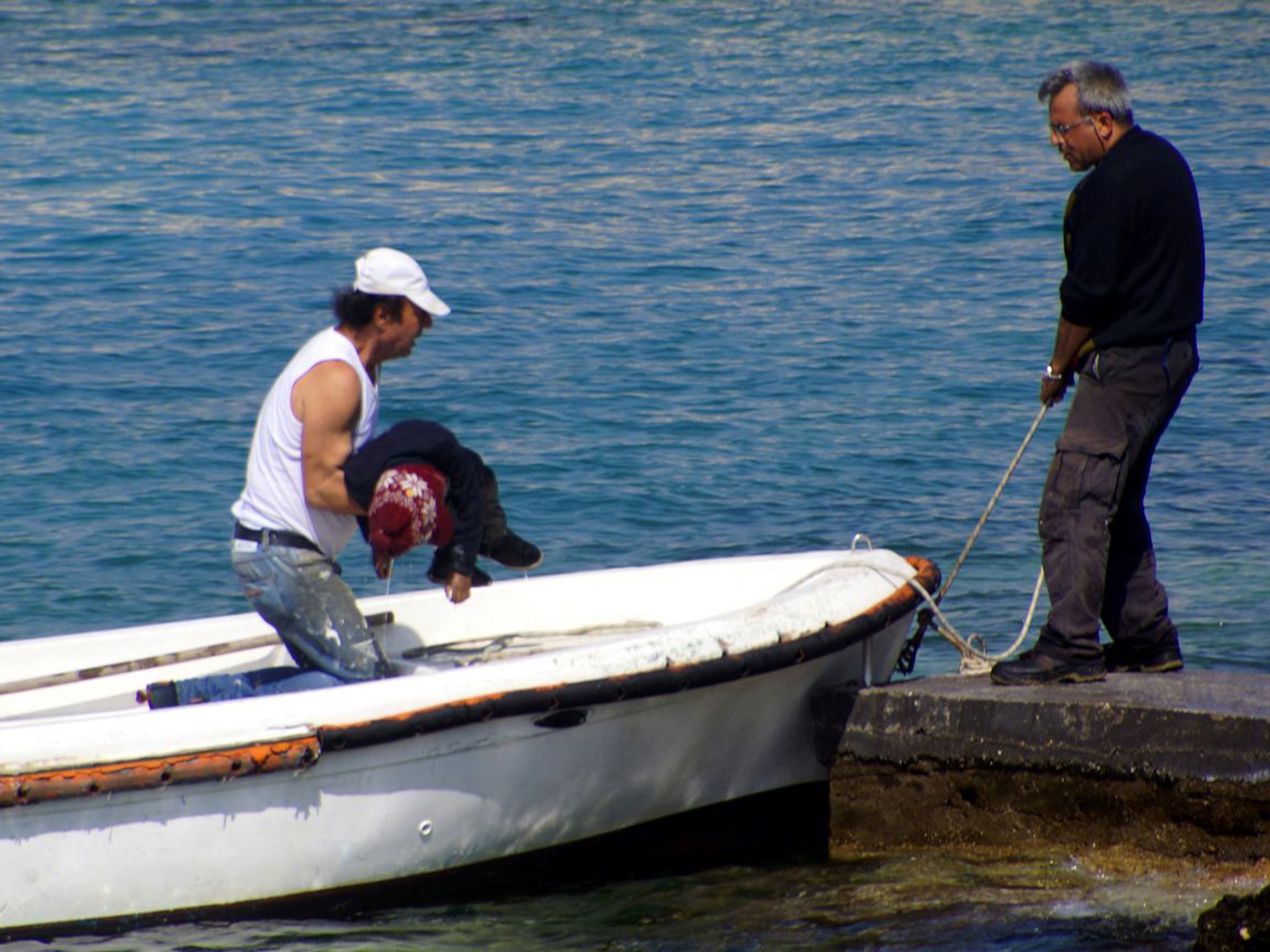Migrant boat disaster: Survivor describes horror of drowning 'prisoners' locked in hold by traffickers
The man suggested there may have been 950 crammed aboard

Support truly
independent journalism
Our mission is to deliver unbiased, fact-based reporting that holds power to account and exposes the truth.
Whether $5 or $50, every contribution counts.
Support us to deliver journalism without an agenda.

Louise Thomas
Editor
A fisherman from Lampedusa has described seeing the body of a young boy floating in an oil slick as he joined the search for survivors of the disaster in the Mediterranean.
Vincenzo Bonomo said he had searched in vain for anyone left alive after the boat capsized. “We thought we had seen it all and instead .... I saw kids’ shoes, jackets, I saw life jackets, I saw a notebook and a backpack and that little boy face down in a huge oil slick that marked the grave of so many of those poor people. But I could not find even one survivor. Not one.”
Those who were rescued have revealed how many of the victims were locked inside the hold when the vessel sank in the Mediterranean between Libya and Lampedusa.
In pictures: Migrant boat disaster
Show all 10The chilling testimony from one of the survivors, a 32-year-old Bangladeshi man, suggests that there may have been as many as 950 people crammed aboard the 70ft fishing vessel which sank after rescuers managed to scoop up only 28 of its occupants.
“There were 950 of us, 40 to 50 children and 200 women, the others all men,” he told authorities in Sicily, after being flown to Catania by helicopter. “I and the others managed to survive because we were outside, but many of the others remained prisoners in the hold of the boat because the traffickers had locked them in and they finished at the bottom of the sea.”
The Bangladeshi man was the first survivor to arrive in Sicily. He was reported to have chest injuries but has managed to talk to investigators. He asked after a compatriot and was told that he had been rescued, by a Coast Guard vessel, the Bruno Gregoretti. The ship was bringing him and the other 26 known survivors, all male adults, to Catania yesterday.

Experts said that with spring sea temperatures already up to 17C, it was conceivable that some of the migrants might have survived for several hours in the water after the incident if they had managed to find floating debris to cling on to.
But by 10am on Sunday there was only slicks of fuel oil and pieces of debris scattered on the waves, according to one of the rescuers – lending credence to the Bangladeshi survivor’s claim that many were dragged down to their deaths immediately, trapped in the vessel’s hold.
The Catania prosecutor Giovanni Salvi told a press conference yesterday afternoon the smugglers’ boat had three levels. He said that “a few hundred were forced into the hull and they were locked in and prevented from coming out”. He said hundreds more were “closed in” at the second level, while hundreds more were on the upper deck.
The Italian coastguard said it was highly probable that not more than one person in 20 aboard the ill-fated migrant vessel had survived.
Filippo Marini, a coastguard spokesman, said on Sunday that it would “almost impossible” to recover the bodies of the victims because the stretch of sea where the boat sank was too deep for divers to access.
The distress call from the migrant vessel came late on Saturday night, when the Italian coastguard was called by someone who said: “We’re at sea, help us.”

With the vessel immediately located by satellite, the coastguard ordered the nearest ship in the Channel of Sicily, the 500ft King Jacob merchant vessel, to lead a rescue. “As soon as they saw us, they became agitated,” said the King Jacob’s captain. And as they rushed to one side of the small fishing boat it capsized, he said.
With its passengers packed like sardines, the vessel had travelled from Egypt and stopped in Libya to pick up more people before tragedy struck. Several other vessels, including a Coast Guard ship, were soon on the scene after the boat capsized, but it was too late to save those who had sunk with the fishing boat, or even save many of those tossed into the sea.
Lampedusa’s mayor, Giusi Nicolini, who has campaigned for better search and rescue services since Italy’s Mare Nostrum ended in December, said she was relieved that the corpses would not be brought back to her little island. “We haven’t got one spare place in the cemetery,” she said.
The 24 recovered bodies have already arrived in Malta in blue body bags, from where they will be taken to Catania.
Subscribe to Independent Premium to bookmark this article
Want to bookmark your favourite articles and stories to read or reference later? Start your Independent Premium subscription today.
Join our commenting forum
Join thought-provoking conversations, follow other Independent readers and see their replies
Comments